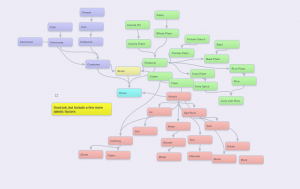Themes: Ignorance and Knowledge
Paragraph #1: Introductory Paragraph (GIT)
Grabber Statement (G):
Imagine a world with no color, emotion, and everyone is ignorant except for two people in the whole community. This is the Giver by Lois Lowry
Introduce Plot Summary (I):
In the Giver there is a boy named Jonas, he is like all the other kids in the society until he gets assigned to the job of the receiver of memory on his 12th birthday. He realizes that his world isn’t so perfect by receiving memories and show him that there is more than just following the rules of the society. In his memories he sees colors, and gets to feel pain and happiness that his society doesn’t have. Is Jonas going to try to change this perfect world, or try to live by these unfair rules?
Thesis Statement (T):
This society is a dystopia because everyone is ignorant, but the receivers of memory.
_________________________________________________________________________
Paragraph #2: Thematic Analysis
Topic Sentence (T):
In the Giver people are kept ignorant.
Explanatory Sentence (E):
The community keeps the people ignorant by having a perfect world with no pain, emotions, or any differences.
Evidence (E):
For example all the memories of pain are kept from the people in the community. The people are kept ignorant by not knowing what pain or happiness is, or any emotions. On page 90 in the Giver the Giver is explaining to Jonas how the community needs someone to take in all the pain. “But it certainly made them aware of how they need a receiver to contain all that pain. And knowledge.”
Analysis (A):
The Giver’s words show that the community relies on the receiver to hold in all the pain and memories. This is important because without anyone knowing about the memories people are kept ignorant. In the Giver most memories are of pain, love, and happiness. In Jonas’s community there is no emotion. There is no expression of love, and Jonas comes to understand that when he asks his parents if they love him and they scold him for misusing language. The people believe that it is easy to contain a perfect world by being kept ignorant. But being kept ignorant may not seem like a good solution to Jonas.
Concluding/ Transition (C):
It is also important to have knowledge from these memories to realize that Jonas’s perfect world may not be so perfect after all.
__________________________________________________________________________
Paragraph #3: Thematic Analysis Continued
Topic Sentence (T):
In Jonas’s community people don’t have any knowledge.
Explanatory Sentence (E):
The only person who keeps all the knowledge is the Giver and Jonas, they are knowledgeable because of the memories.
Evidence (E):
By receiving memories Jonas gets to experience emotions, and gets knowledge. On page 102 in the Giver Jonas experiences the feeling of happiness that he has never felt before. “There are so many good memories,” The Giver reminded Jonas. And it was true. By now Jonas had experienced countless bits of happiness,” pg. 102
Analysis (A):
By receiving these emotions through memories Jonas gets some knowledge. Pain and happiness are some of the emotions, with these emotions Jonas realizes that his world isn’t so perfect. He notices that there is no happiness in his community and no love. In his memories he gets to experience the emotions that he normally doesn’t get to experience. The other people in the community don’t notice that their world isn’t so perfect, they think it’s a perfect world because they haven’t received the memories.
Concluding/ Transition (C):
Jonas starts to realize that in his community everyone kept ignorant and the same. He notices there are no emotions, and is starting to notice that his community is not such a Utopia.
__________________________________________________________________________
Paragraph #4: Concluding Paragraph (ROC)
Restatement of Thesis (R):
Jonas’s community is not a utopia because everyone is kept ignorant. Making people live in ignorance deprives them from living in a real world.
Overview of Main Points (O):
Having pain and knowledge are feelings you would have in a real world, but Jonas’s community had never experienced them.
Concluding Sentence– Comparisons and Connections (C):
A utopia is a place where people are recognized by their differences and where people can make mistakes, but learn from them, it’s a place where people have feeling and pain. How would you feel if you were the only one in a whole society who knew things about the real world? Would you be frustrated or try to make a change about it?



